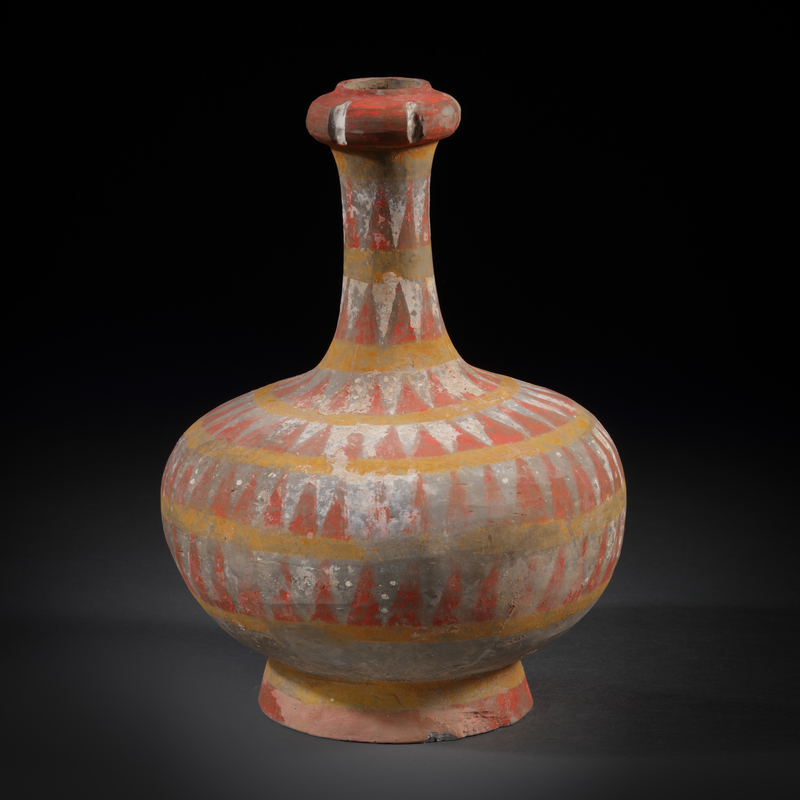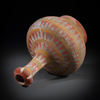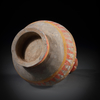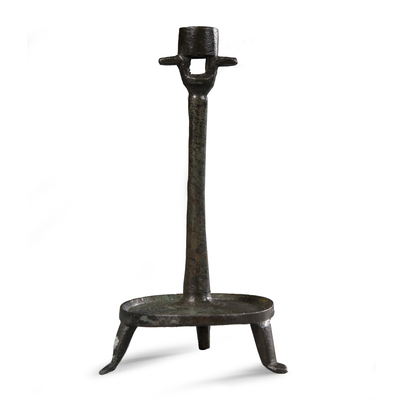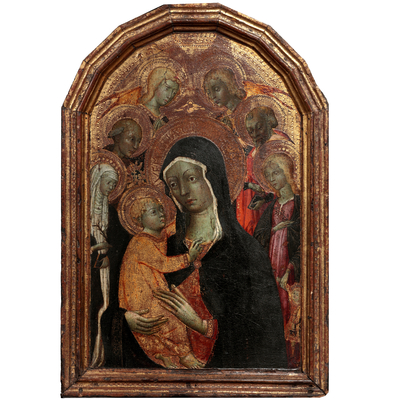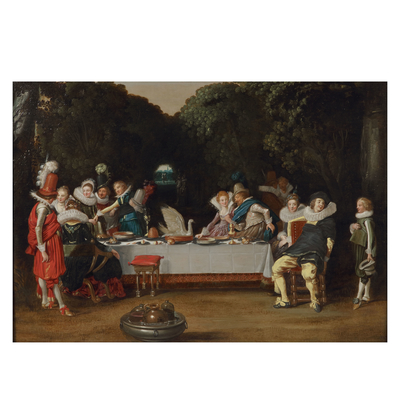Pottery garlic-head vase, Suantouping
Global shipping available
- Origin
- China
- Period
- Han Dynasty, 206 BC - 220 AD
- Material
- Earthenware with pigment
- Height
- 29 cm
- Literature
L. Liang-Yu, A Survey of Chinese Ceramics, Early Wares: Prehistoric to Tenth Century, Taipei 1991, p. 107, 109.
Questions about this object?
Please use one of the contact options below:
Description
TL Test Oxford Authentication
This grey pottery vase has a compressed globular body that is supported on a tapered, tall foot. The flared neck ends in a so-called ‘garlic-head’. The vase is painted with a repeated geometric design of triangles, in red, yellow and white pigments. The grey pottery vase was first fired and afterwards, the colours were applied, which are still bright.
The vase is made from low fired earthenware, a material that is not watertight and makes the vase not suited for everyday use. The garlic-head vase was thus intended for ritual and symbolic use. The form and the motifs of the vase are derived from the bronze garlic-head vases of the Qin and Han dynasty. There are more examples of ritual pottery that imitated archaic bronze objects.
Examples of bronze garlic-head vases, from the Qin or Han dynasty, are amongst others in the collection of the National Palace Museum, Taipei.
